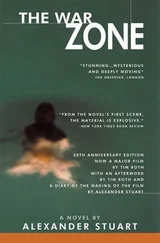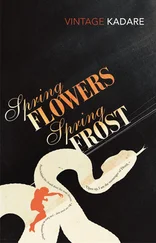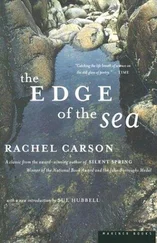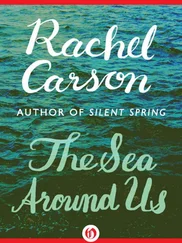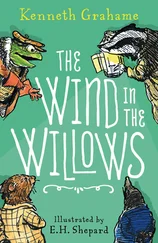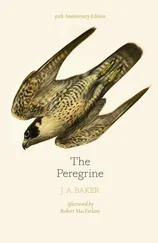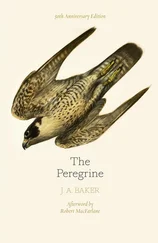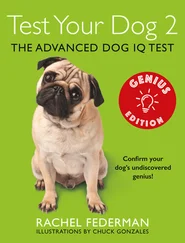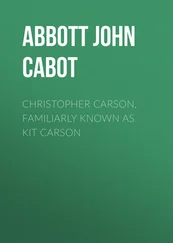In Carson’s view, the postwar culture of science that arrogantly claimed dominion over nature was the philosophic root of the problem. Human beings, she insisted, were not in control of nature but simply one of its parts: the survival of one part depended upon the health of all. She protested the “contamination of man’s total environment” with substances that accumulate in the tissues of plants, animals, and humans and have the potential to alter the genetic structure of organisms.
Carson argued that the human body was permeable and, as such, vulnerable to toxic substances in the environment. Levels of exposure could not be controlled, and scientists could not accurately predict the long-term effects of bioaccumulation in the cells or the impact of such a mixture of chemicals on human health. She categorically rejected the notion proposed by industry that there were human “thresholds” for such poisons, as well as its corollary, that the human body had “assimilative capacities” that rendered the poisons harmless. In one of the most controversial parts of her book, Carson presented evidence that some human cancers were linked to pesticide exposure. That evidence and its subsequent elaboration by many other researchers continue to fuel one of the most challenging and acrimonious debates within the scientific and environmental communities.
Carson’s concept of the ecology of the human body was a major departure in our thinking about the relationship between humans and the natural environment. It had enormous consequences for our understanding of human health as well as our attitudes toward environmental risk. Silent Spring proved that our bodies are not boundaries. Chemical corruption of the globe affects us from conception to death. Like the rest of nature, we are vulnerable to pesticides; we too are permeable. All forms of life are more alike than different.
Carson believed that human health would ultimately reflect the environment’s ills. Inevitably this idea has changed our response to nature, to science, and to the technologies that devise and deliver contamination. Although the scientific community has been slow to acknowledge this aspect of Carson’s work, her concept of the ecology of the human body may well prove to be one of her most lasting contributions.
In 1962, however, the multimillion-dollar industrial chemical industry was not about to allow a former government editor, a female scientist without a Ph.D. or an institutional affiliation, known only for her lyrical books on the sea, to undermine public confidence in its products or to question its integrity. It was clear to the industry that Rachel Carson was a hysterical woman whose alarming view of the future could be ignored or, if necessary, suppressed. She was a “bird and bunny lover,” a woman who kept cats and was therefore clearly suspect. She was a romantic “spinster” who was simply overwrought about genetics. In short, Carson was a woman out of control. She had overstepped the bounds of her gender and her science. But just in case her claims did gain an audience, the industry spent a quarter of a million dollars to discredit her research and malign her character. In the end, the worst they could say was that she had told only one side of the story and had based her argument on unverifiable case studies.
There is another, private side to the controversy over Silent Spring. Unbeknown to her detractors in government and industry, Carson was fighting a far more powerful enemy than corporate outrage: a rapidly metastasizing breast cancer. The miracle is that she lived to complete the book at all, enduring a “catalogue of illnesses,” as she called it. She was immune to the chemical industry’s efforts to malign her; rather, her energies were focused on the challenge of survival in order to bear witness to the truth as she saw it. She intended to disturb and disrupt, and she did so with dignity and deliberation.
After Silent Spring caught the attention of President John F. Kennedy, federal and state investigations were launched into the validity of Carson’s claims. Communities that had been subjected to aerial spraying of pesticides against their wishes began to organize on a grass-roots level against the continuation of toxic pollution. Legislation was readied at all governmental levels to defend against a new kind of invisible fallout. The scientists who had claimed a “holy grail” of knowledge were forced to admit a vast ignorance. While Carson knew that one book could not alter the dynamic of the capitalist system, an environmental movement grew from her challenge, led by a public that demanded that science and government be held accountable. Carson remains an example of what one committed individual can do to change the direction of society. She was a revolutionary spokesperson for the rights of all life. She dared to speak out and confront the issue of the destruction of nature and to frame it as a debate over the quality of all life.
Rachel Carson knew before she died that her work had made a difference. She was honored by medals and awards, and posthumously received the Presidential Medal of Freedom in 1981. But she also knew that the issues she had raised would not be solved quickly or easily and that affluent societies are slow to sacrifice for the good of the whole. It was not until six years after Carson’s death that concerned Americans celebrated the first Earth Day and that Congress passed the National Environmental Policy Act establishing the Environmental Protection Agency as a buffer against our own handiwork. The domestic production of DDT was banned, but not its export, ensuring that the pollution of the earth’s atmosphere, oceans, streams, and wildlife would continue unabated. DDT is found in the livers of birds and fish on every oceanic island on the planet and in the breast milk of every mother. In spite of decades of environmental protest and awareness, and in spite of Rachel Carson’s apocalyptic call alerting Americans to the problem of toxic chemicals, reduction of the use of pesticides has been one of the major policy failures of the environmental era. Global contamination is a fact of modern life.
Silent Spring compels each generation to reevaluate its relationship to the natural world. We are a nation still debating the questions it raised, still unresolved as to how to act for the common good, how to achieve environmental justice. In arguing that public health and the environment, human and natural, are inseparable, Rachel Carson insisted that the role of the expert had to be limited by democratic access and must include public debate about the risks of hazardous technologies. She knew then, as we have learned since, that scientific evidence by its very nature is incomplete and scientists will inevitably disagree on what constitutes certain proof of harm. It is difficult to make public policy in such cases when government’s obligation to protect is mitigated by the nature of science itself.
Rachel Carson left us a legacy that not only embraces the future of life, in which she believed so fervently, but sustains the human spirit. She confronted us with the chemical corruption of the globe and called on us to regulate our appetites—a truly revolutionary stance—for our self-preservation. “It seems reasonable to believe,” she wrote, “that the more clearly we can focus our attention on the wonders and realities of the universe about us, the less taste we shall have for the destruction of our race. Wonder and humility are wholesome emotions, and they do not exist side by side with a lust for destruction.”
Wonder and humility are just some of the gifts of Silent Spring. They remind us that we, like all other living creatures, are part of the vast ecosystems of the earth, part of the whole stream of fife. This is a book to relish: not for the dark side of human nature, but for the promise of life’s possibility.
Читать дальше

